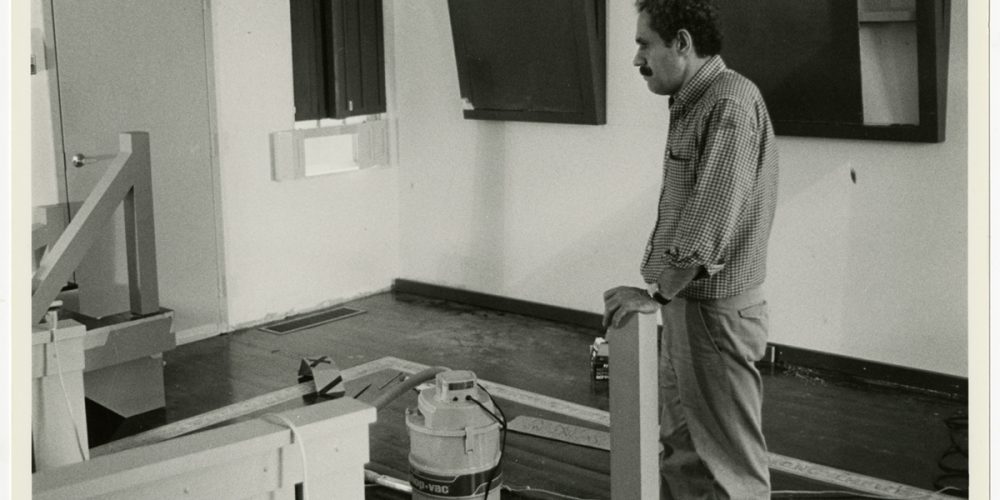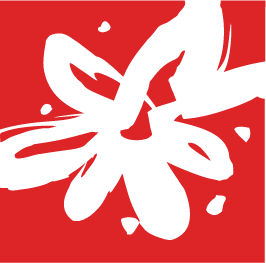
The Fleisher Years Chapter 8: Form and Function: The Louis Kahn Lecture Room (1982–2022)
“Schools began with a man under a tree who did not know he was a teacher, sharing his realization with a few others who did not know they were students.” – Louis Kahn
During the 1980s and 1990s, the Fairmount Park Art Association (now the Association for Public Art) organized a series of benchmark programs with lasting influence on contemporary public art practice. These programs explored links between public art and various disciplines—including architecture, landscape architecture, and urban planning—and investigated the pivotal role that public art can play in the design of cities and public spaces, including sites such as Fleisher Art Memorial.
To bridge the gap between public art and everyday life, the Art Association initiated the pioneering program Form and Function in 1980. The Art Association invited artists to propose public art projects for Philadelphia that would be utilitarian, site-specific, and integral to community life. Each artist was asked to give meaning or identity to a place, to probe for the genius loci, or the “spirit of the place.” It was at Fleisher Art Memorial that one of the program’s first works, Siah Armajani’s Louis Kahn Lecture Room, would be installed in 1982 and remain for decades until its 2022 acquisition by the Philadelphia Museum of Art.
Siah Armajani (1939 – 2020) emigrated to the United States in 1960 from Iran and became a central figure in contemporary public art. His bridges, temporary interior workspaces, gathering rooms, and outdoor garden structures are works of art in service of the activities of daily life, often incorporating passages from favorite writers that extol shared democratic values. For Form and Function, Armajani wanted to create a work for a school. The result was a room dedicated to Louis Kahn—who attended Fleisher Art Memorial as a child and became one of the most important architects of the 20th century—that served as a lecture room and meeting place as well as a gallery for displaying reproductions of Kahn’s architectural drawings.
Louis Kahn (1901 – 1974) arrived in Philadelphia as a young immigrant from Estonia, after his parents fled their home country to avoid conscription in the Russo-Japanese War. His interest in the arts at an early age forged a path toward his later recognition as one of America’s most important architects (and a Fleisher board member). It has been said that he could often be found playing the piano in the Sanctuary, and his vibrant architectural legacy would also become the inspiration behind the adjacent Kahn Lecture Room.
Designed to accommodate a class-sized group, the Lecture Room featured pew-like benches that faced a raised lectern and blackboards, as is typical of a classroom or lecture hall. Armajani’s approach suggested the simplicity of early American furniture and architecture but did not place emphasis on a single center. Rather than assigning a hierarchy to the arrangement of the room’s built elements, Armajani enabled participants to grant their own meaning to the space through its ongoing activation and use. Mounted on the cornice were quotations from Kahn, one of which read: “Schools began with a man under a tree who did not know he was a teacher, sharing his realization with a few others who did not know they were students.” An intentionally open space between the sets of seating was also occupied by stencil-cut letters inlaid into the wooden floor, bearing a verse by Walt Whitman that begins: “When the materials are prepared and ready, the architects shall appear.”
The room’s simple elegance, suggestive of a Quaker meetinghouse, was intended by Armajani to evoke a meditative quality similar to the feeling of Fleisher’s adjacent Sanctuary. The Association for Public Art initially questioned whether it made sense to pursue the Armajani installation, given the organization’s focus on outdoor public works. “The association’s board was concerned about doing an interior public space,” explained Penny Balkin Bach, the Association’s Executive Director. “They wondered if they should be doing it, but they also felt that it should be investigated. Because Fleisher is free and open to anyone, it was an appropriate space to attempt it.”
More than three decades later, Fleisher Art Memorial’s Board of Directors approved a Master Plan prepared by Atkin Olshin Schade Architects in 2015 to guide the use and improvement of its campus. The plan called for the removal of the Louis Kahn Lecture Room in order to improve access and use of Fleisher’s Sanctuary, as Armajani’s work was no longer able to be used in the way the artist originally intended. Studios had since been established on other floors of the building, changing the nature of the room from a quiet space for contemplation into a circulation path to the rest of the building. The Master Plan identified the need to create a separate entrance to the Sanctuary accessible to all visitors, as well as increased restroom facilities and equipment storage.
In 2022, working with various staff members at the Philadelphia Museum of Art, including curators and conservators, Fleisher gifted the room to the museum. This collaborative effort to honor Armajani’s work and preserve the integrity of the original installation also provided an opportunity for both institutions to honor the history of the Louis Kahn Lecture Room as a unique memorial to the artistic and cultural legacy of Philadelphia. “Siah Armajani’s legacy is much treasured and beloved at the Philadelphia Museum of Art, and we are delighted to receive the extraordinary gift of the Kahn Lecture Room into our collection,” said Carlos Basualdo, the Keith L. and Katherine Sachs Senior Curator of Contemporary Art at the Philadelphia Museum of Art. “Armajani’s installation is like a mirror that reflects the best of Philadelphia and allows us to think about the extraordinary heritage of our city in the most hopeful light. His work is about conversation and learning, about beauty and simplicity. We look forward to exhibiting it and to activating it in the future within the walls of our museum.”
To learn more about Armajani’s project and the Form and Function program, please visit the Association for Public Art website. To read more about the last year’s deinstallation and PMA acquisition of the Louis Kahn Lecture Room, visit WHYY for related coverage.


To get updates on events, exhibitions & class information:
"*" indicates required fields